Table of Contents
Introduction
Hydrangeas are among the most captivating ornamental plants, admired worldwide for their vibrant colors, varied flower forms, and lush foliage. Although they are native to regions like Japan, Korea, China, and North America, many hydrangea varieties adapt beautifully to India’s cooler climates especially in the hill regions of Himachal Pradesh, Uttarakhand, Sikkim, Meghalaya, and the Nilgiris.
From the classic mophead and lacecap types to compact dwarf forms and climbing species, hydrangeas offer a wide range of choices for gardeners and landscape enthusiasts. This blog explores 15 beautiful types of hydrangea plants, covering their characteristics, blooming seasons, and uses.
Whether you’re looking to fill a shaded corner, add color to a terrace, or design a cottage-style garden, there’s a hydrangea variety for every space.
15 Stunning Types of Hydrangeas
Smooth Hydrangea

Botanical Name: Hydrangea arborescens (including ‘Annabelle’)
Native to the eastern USA, Smooth Hydrangea grows 3–5 feet tall with globe-shaped white flowers. Blooms appear in late spring and continue through the late monsoon in India’s cooler hill regions. Unlike some other hydrangeas, Smooth Hydrangea is less sensitive to soil pH, so its flower color remains consistent and does not shift based on acidity.
Uses & Benefits:
- Beginner-friendly
- Excellent for creating bold white accents in gardens
- Thrives in partial shade
Unique Feature: Produces massive, snowball-like blooms even after pruning.
Mountain Hydrangea
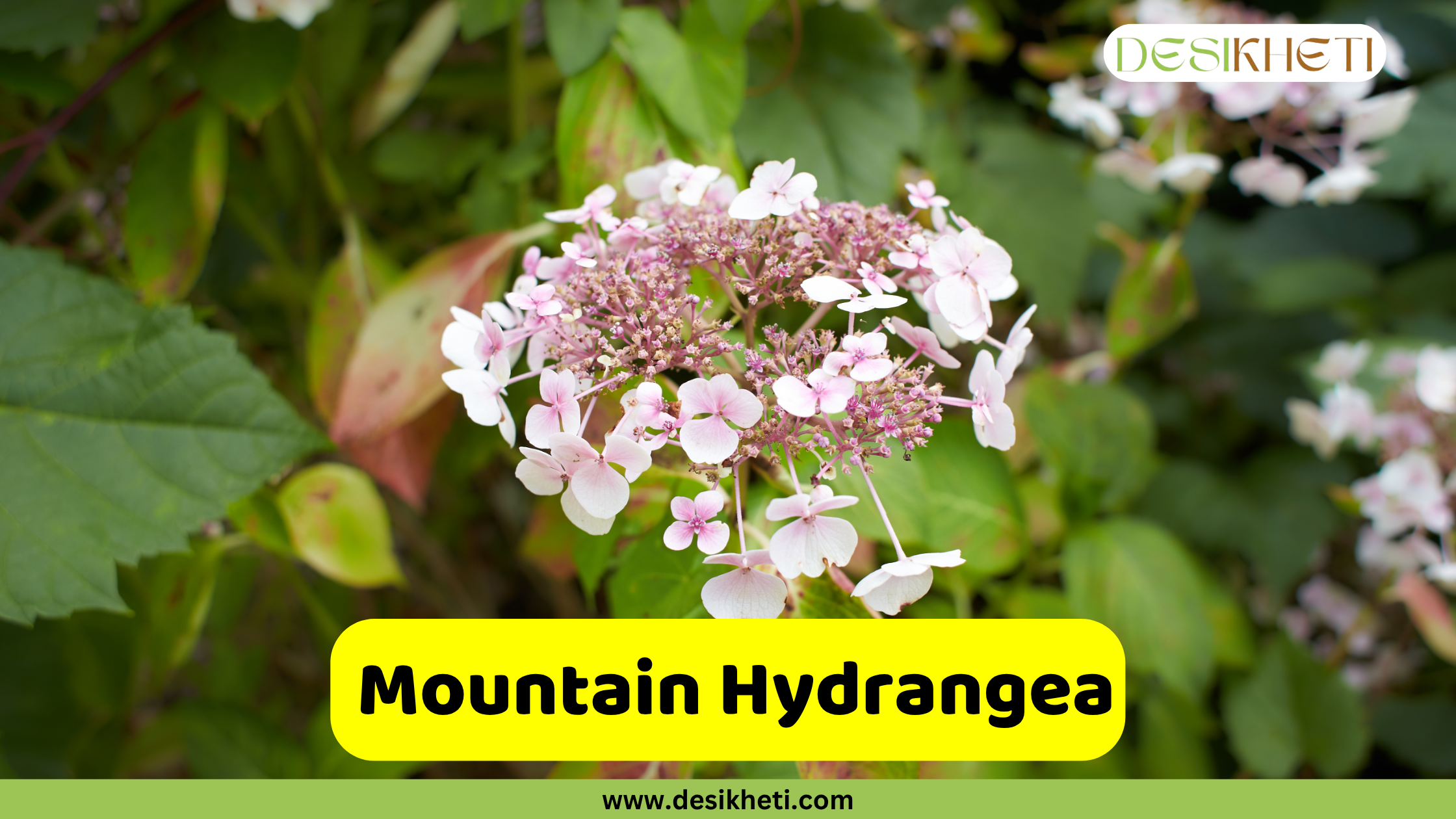
Botanical Name: Hydrangea serrata
Native to the mountainous regions of Japan, this compact (2–4 feet) shrub bears lacecap flowers in pink or blue. The flowers bloom from late spring to early summer and thrive in high humidity and cooler climates.
Uses & Benefits:
- Perfect for bonsai and small garden spaces
- Cold-hardy and low maintenance
- Adds woodland charm to shaded beds
Unique Feature: Suitable for bonsai culture and miniature gardens.
Limelight Hydrangea

Botanical Name: Hydrangea paniculata ‘Limelight’
Native to eastern Asia, this variety features cone-shaped flowers that transition from lime green to burgundy. Blooms appear from mid-summer to fall. It grows 6–8 feet tall in India’s cooler hill regions.
Uses & Benefits:
- Thrives in full sun and heat
- Low maintenance with dynamic color display
- Excellent for borders, floral arrangements, or as a focal plant
Unique Feature: Dramatic color-changing blooms.
Vanilla Strawberry Hydrangea
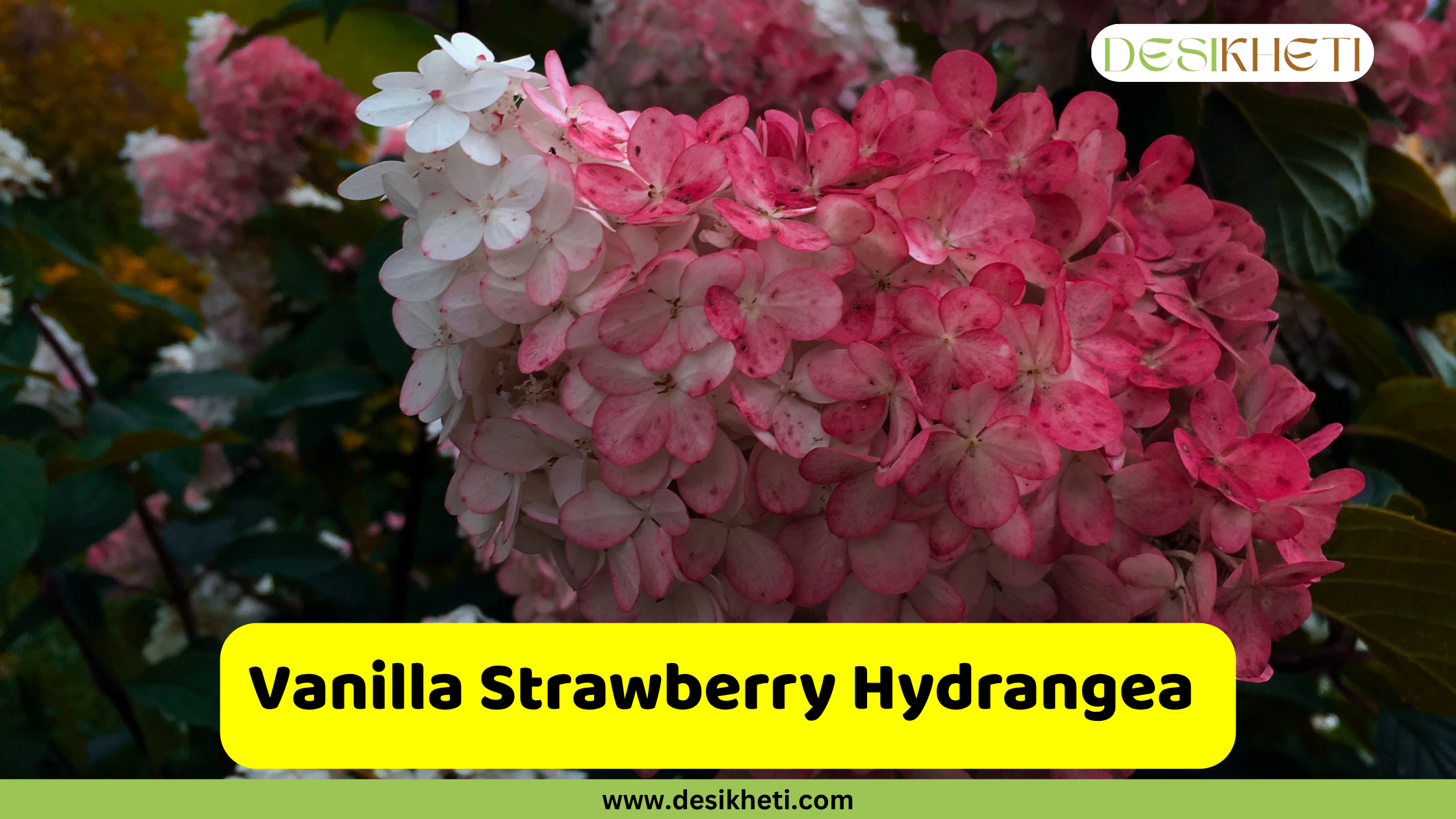
Botanical Name: Hydrangea paniculata ‘Vanilla Strawberry’
A cultivar originating in France, this hydrangea produces creamy white flowers that turn pink and eventually strawberry red. It grows 6–7 feet tall and blooms from mid-summer to early autumn in cooler Indian climates.
Uses & Benefits:
- Multi-colored blooms
- Long vase life; great for cut flowers
Unique Feature: Displays three colors on one plant during blooming.
Phantom Hydrangea
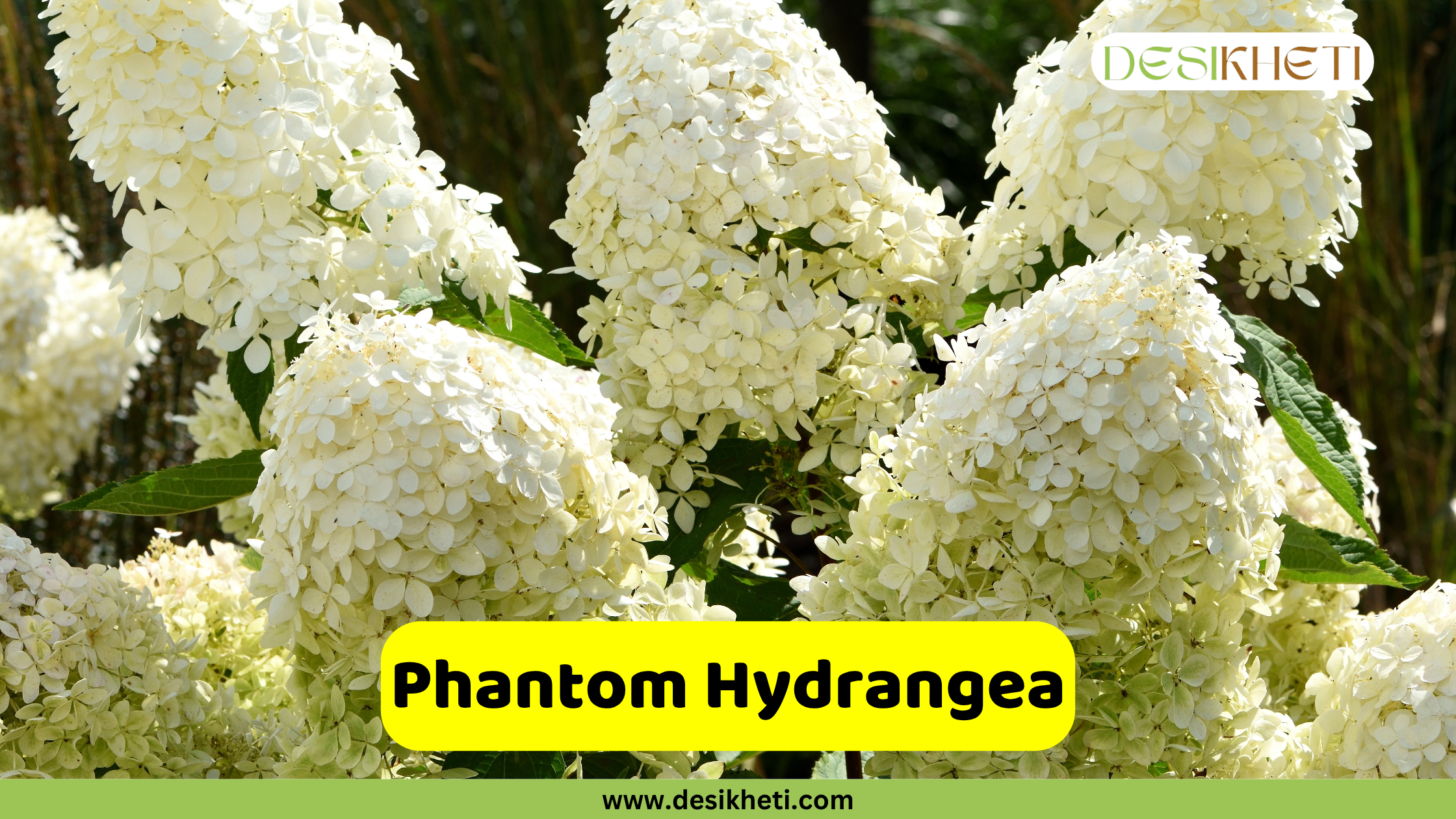
Botanical Name: Hydrangea paniculata ‘Phantom’
Originating from Belgium, ‘Phantom’ grows 6–10 feet tall and produces massive, cone-shaped flower heads up to 15 inches long. These open creamy white in mid to late summer and gradually fade to soft pink by early autumn. Strong, upright stems keep the heavy blooms from flopping over.
Uses & Benefits:
- Ideal for large garden backdrops
- Stunning cut flowers with long vase life
- Performs well in full sun to partial shade
Unique Feature: Produces some of the largest flower clusters among all hydrangeas up to 15 inches long.
Bobo Hydrangea
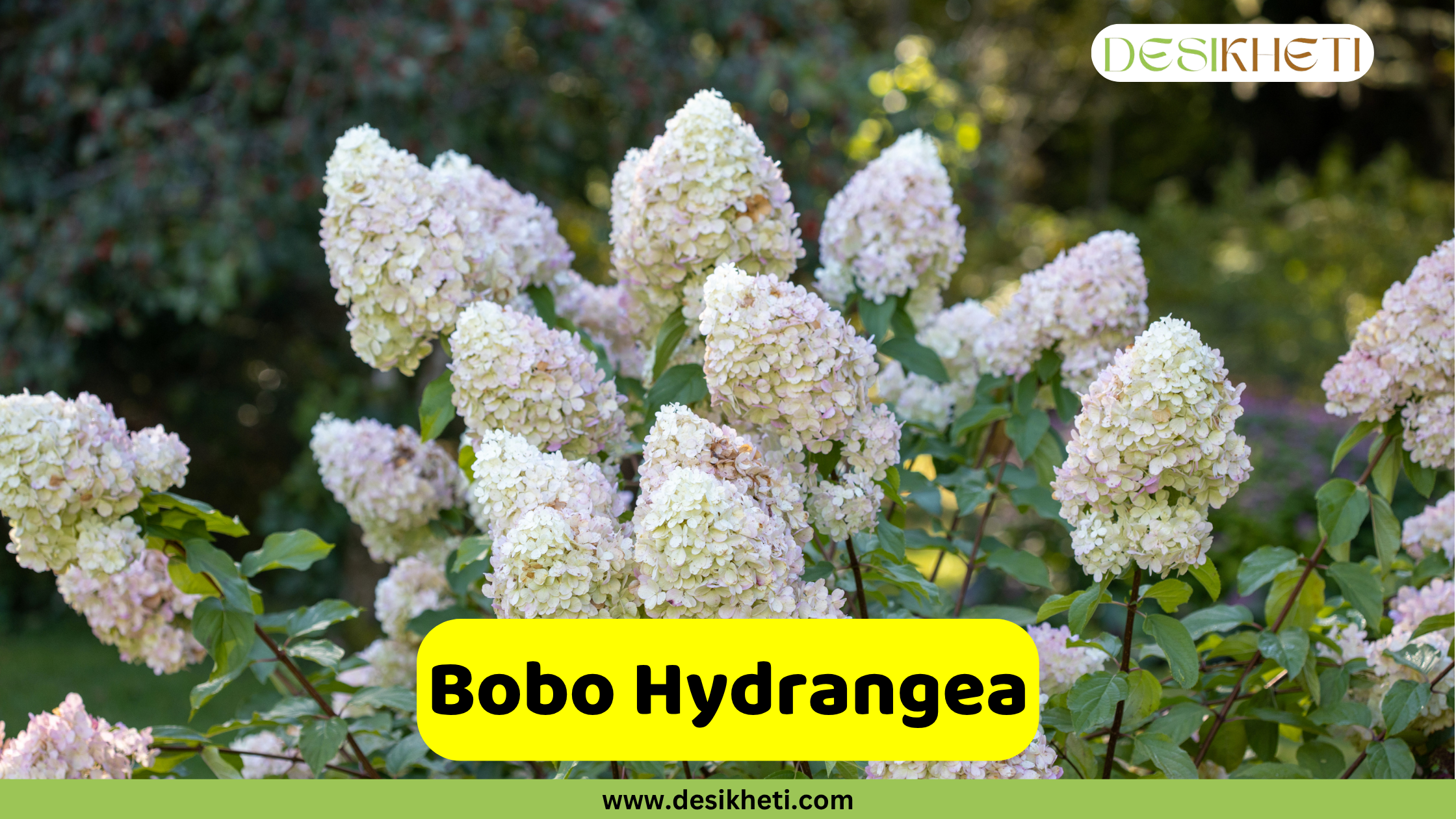
Botanical Name: Hydrangea paniculata ‘Bobo’
This compact (2.5–3 feet) variety is dense with white flowers that blush pink. It blooms from mid to late summer and is ideal for pots or small spaces. It is also an award-winning variety.
Uses & Benefits:
- Great for containers and terraces
- Ideal for tight urban gardens
Unique Feature: Space-saving variety with abundant blooms.
Invincibelle Spirit Hydrangea
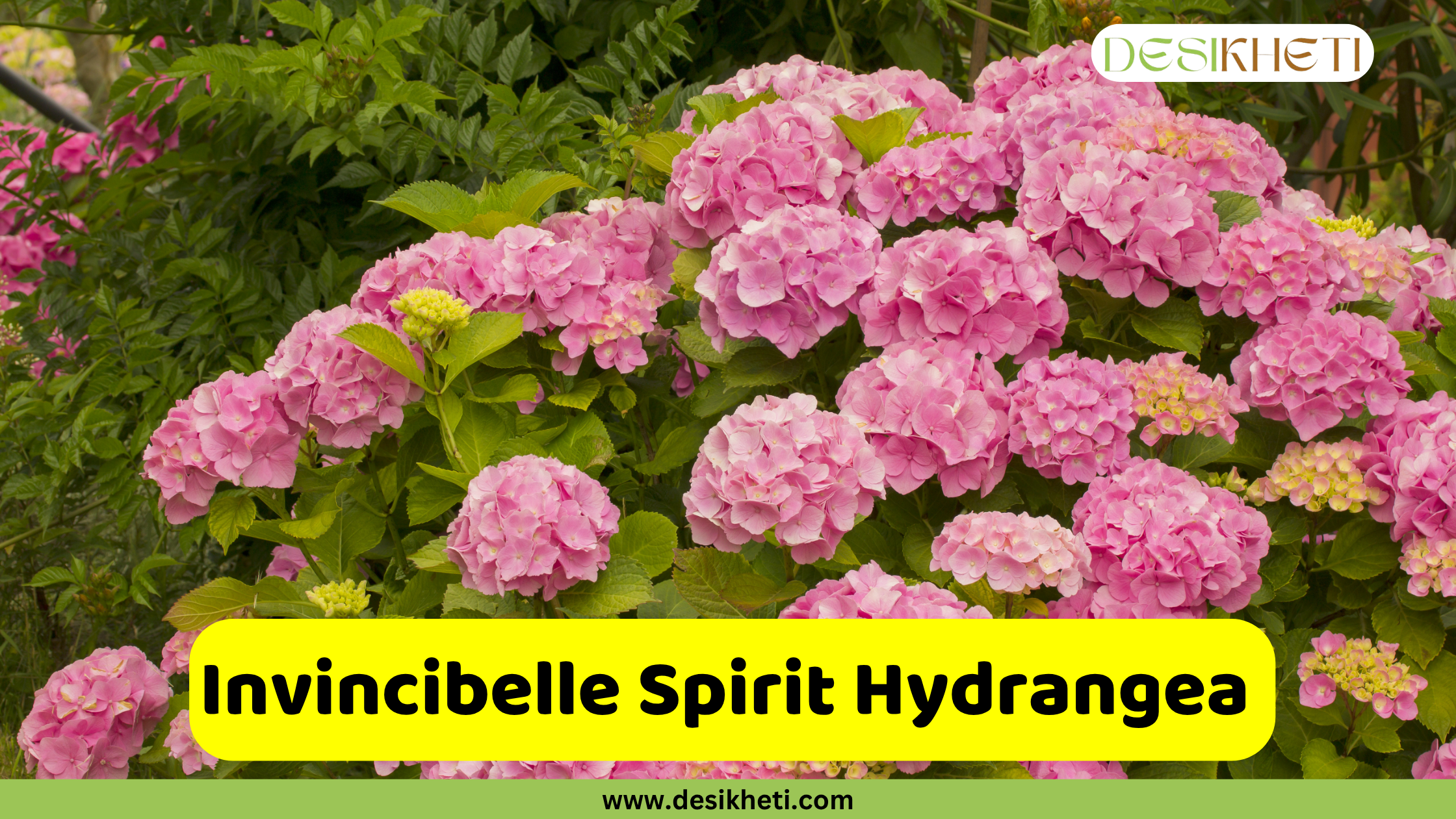
Botanical Name: Hydrangea arborescens ‘Invincibelle Spirit’
A U.S.-bred cultivar, this plant features rosy pink, dome-shaped flowers that rebloom from early summer to fall. It grows 3–4 feet tall.
Uses & Benefits:
- Easy to prune and cold-hardy
- Adds symbolic and visual value to gardens
Unique Feature: First pink-flowered Smooth Hydrangea that reblooms.
Little Lime Hydrangea
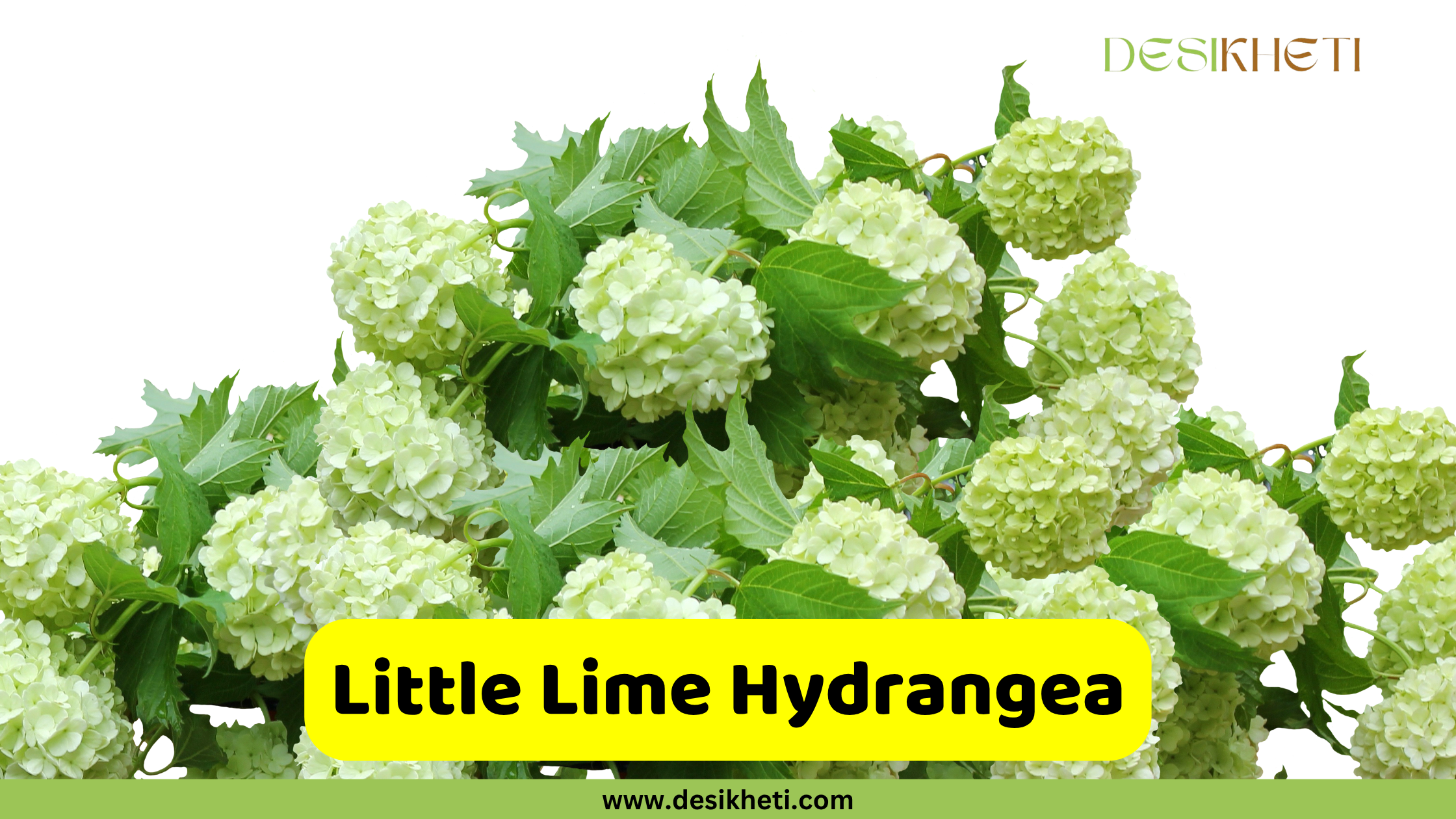
Botanical Name: Hydrangea paniculata ‘Little Lime’
A compact version of Limelight, bred in the USA, this variety grows 3–5 feet tall. Lime green flowers mature to pink and bloom from mid to late summer.
Uses & Benefits:
- Offers bold seasonal color
- Strong stems prevent drooping
Unique Feature: Dwarf version of Limelight with equal impact.
Incrediball Hydrangea
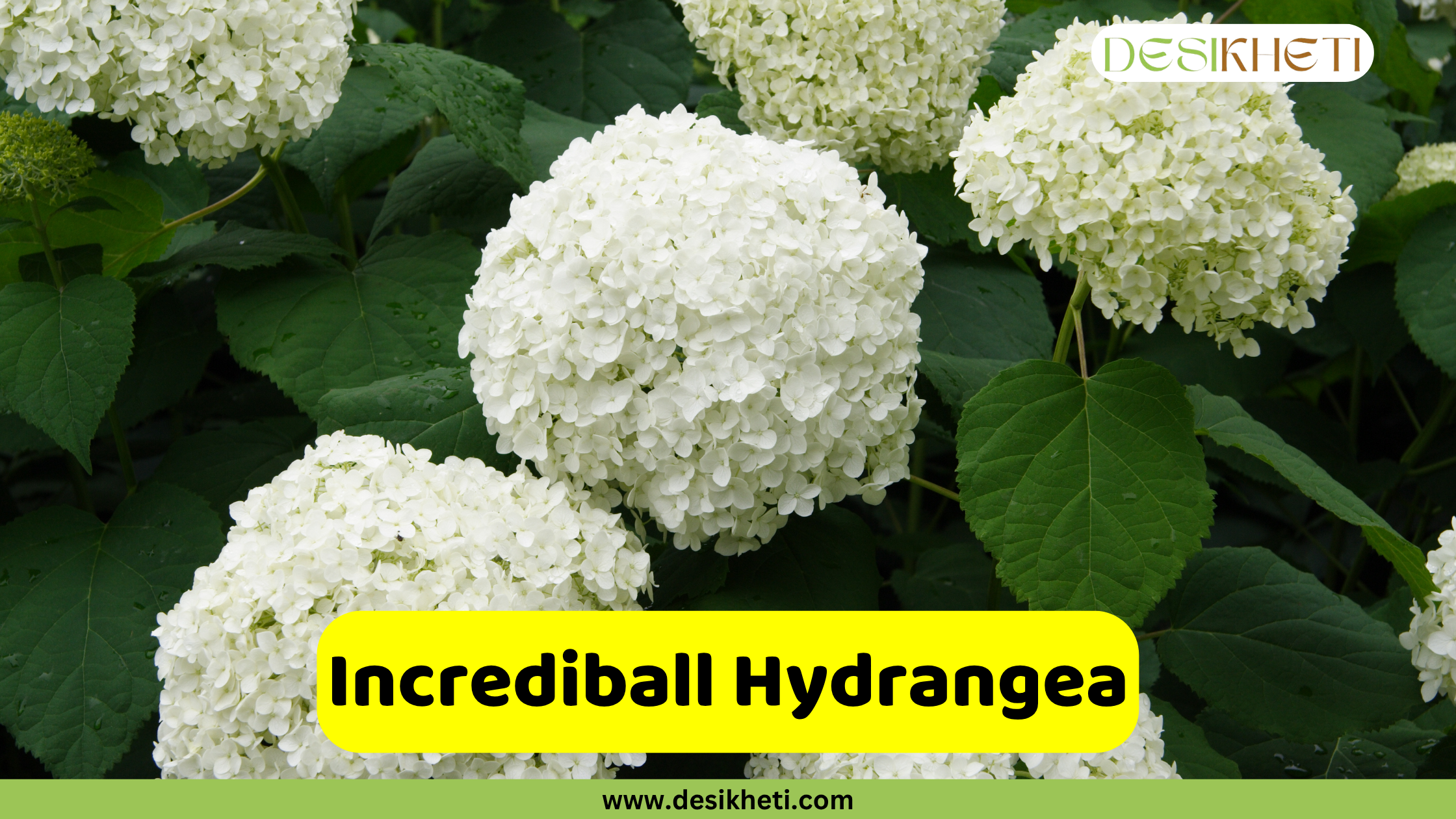
Botanical Name: Hydrangea arborescens ‘Incrediball’
A robust cultivar of Smooth Hydrangea, ‘Incrediball’ features enormous, globe-shaped white flower heads up to 12 inches across. Sturdy stems hold the heavy blooms upright, even after rain. Grows 4–5 feet tall and blooms from early summer to late monsoon in India’s cool hill regions.
Uses & Benefits:
- Excellent for bold white floral displays
- Strong stems prevent drooping after rain
- Great for borders and mass plantings
Unique Feature: Massive, showy blooms with stronger stems.
Pinky Winky Hydrangea
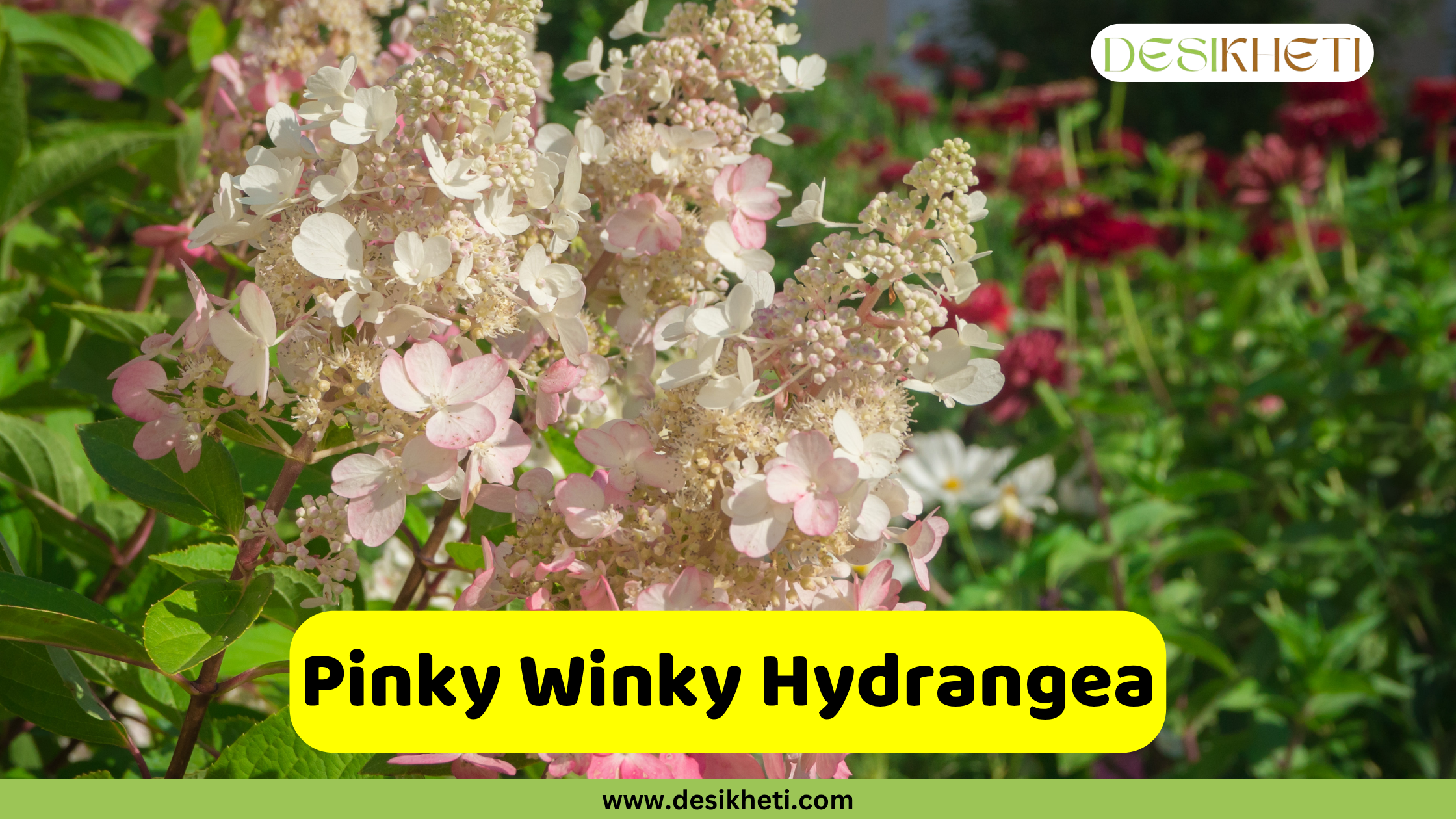
Botanical Name: Hydrangea paniculata ‘Pinky Winky’
A striking panicle hydrangea, ‘Pinky Winky’ grows 6–8 feet tall and produces large, upright cone-shaped flower clusters that start white and turn bright pink from the base upward. This two-tone effect appears from mid-summer to autumn, especially in cooler regions like Himachal Pradesh, Uttarakhand, and the Northeast.
Uses & Benefits:
- Unique dual-colored blooms for long-lasting beauty
- Great as a statement shrub or hedge
Unique Feature: Panicles change from white to deep pink, often showing both shades on one flower spike.
Bluebird Hydrangea
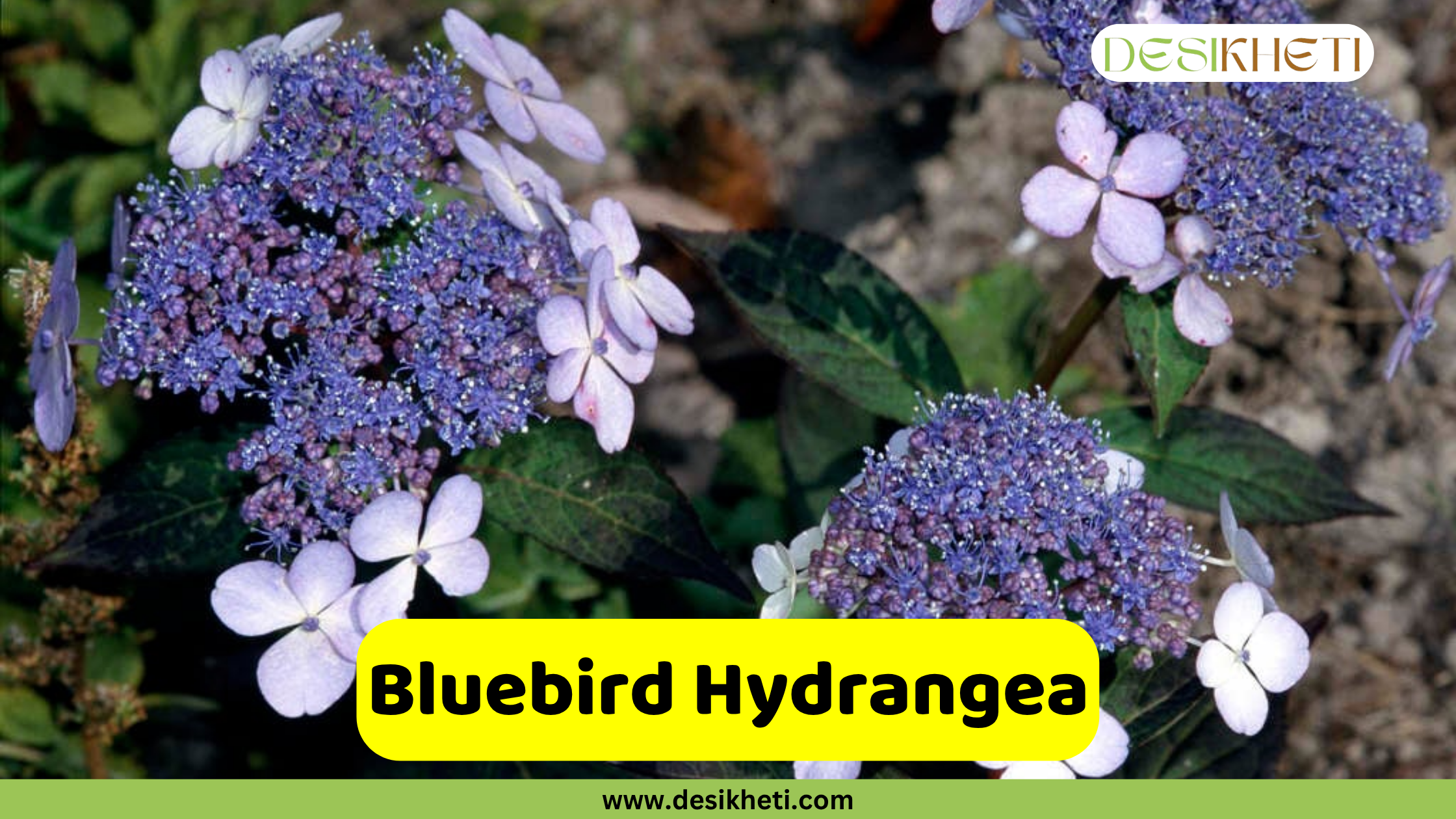
Botanical Name: Hydrangea serrata ‘Bluebird’
‘Bluebird’ is a refined lacecap variety that grows 3–4 feet tall and wide. It features soft blue fertile flowers surrounded by pale lavender or sky-blue sterile florets. Blooming from late spring to early summer, it thrives in cool, moist, shaded regions like Sikkim, Darjeeling, and parts of Himachal Pradesh.
Uses & Benefits:
- Excellent for bonsai or compact borders
- Attractive to pollinators
Tardiva Hydrangea
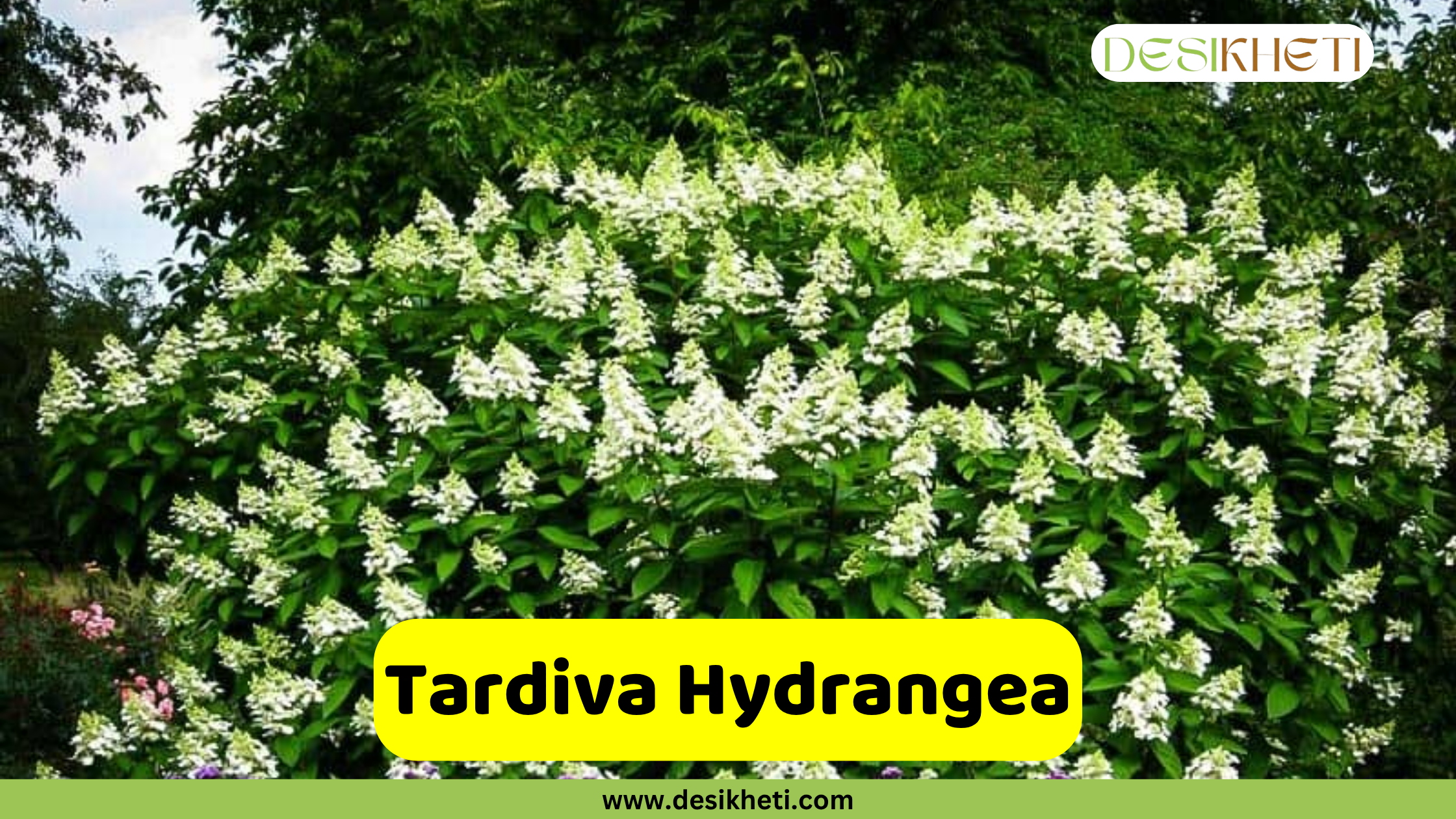
Botanical Name: Hydrangea paniculata ‘Tardiva’
‘Tardiva’ is a late-flowering panicle hydrangea known for its large, airy white blooms that appear from late summer to early autumn. It grows 8–10 feet tall and wide, forming a bold, upright shrub or small tree. Loose, lacy flower heads and dark green foliage add texture and contrast.
Uses & Benefits:
- Suitable for large garden borders
- One of the latest blooming hydrangeas
Unique Feature: Adds late-season charm when most others have faded.
Tiny Tuff Stuff Hydrangea
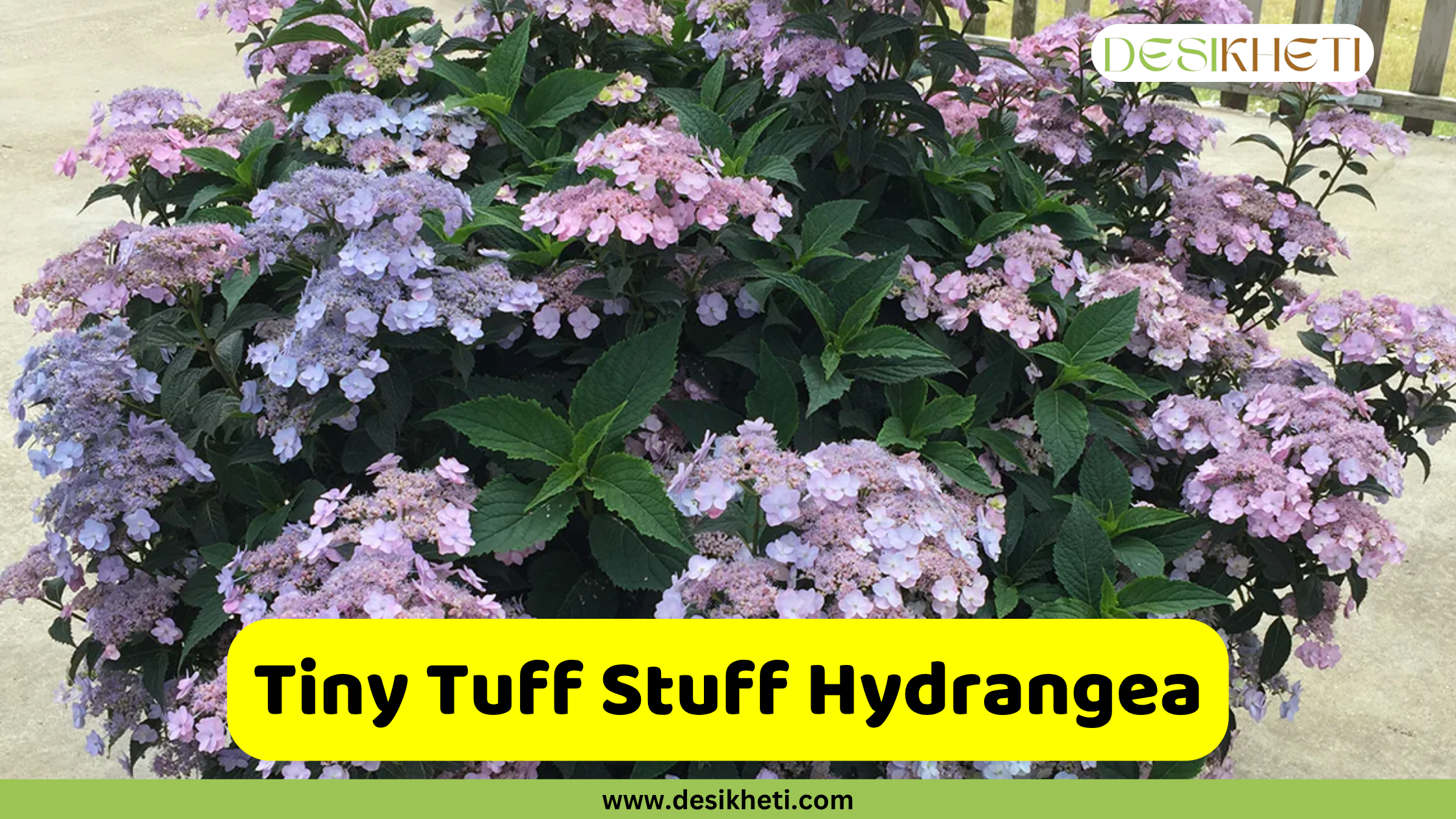
Botanical Name: Hydrangea serrata ‘Tiny Tuff Stuff’
A hybrid of Mountain Hydrangea, this tiny (1.5–2 feet) plant blooms with lacecap flowers from late spring to fall. Very cold-hardy and capable of reblooming multiple times.
Uses & Benefits:
- Great for containers and borders
- Offers season-long color
- Easy care for limited spaces
Unique Feature: Tiny, cold-hardy rebloomer perfect for patios.
Mariesii Variegata Hydrangea

Botanical Name: Hydrangea macrophylla ‘Mariesii Variegata’
This variety is prized for its stunning variegated foliage green leaves edged with creamy white that adds ornamental value even when not in bloom. It produces delicate lacecap flowers in pink or blue (depending on soil pH) from late spring through summer. The plant typically grows 4–6 feet tall and wide, making it ideal for shaded borders or decorative containers.
Uses & Benefits:
- Suitable for shaded gardens and patios
- Reblooms with proper care and soil conditions
Unique Feature: Creamy-edged foliage adds visual interest even before flowering.
Climbing Hydrangea
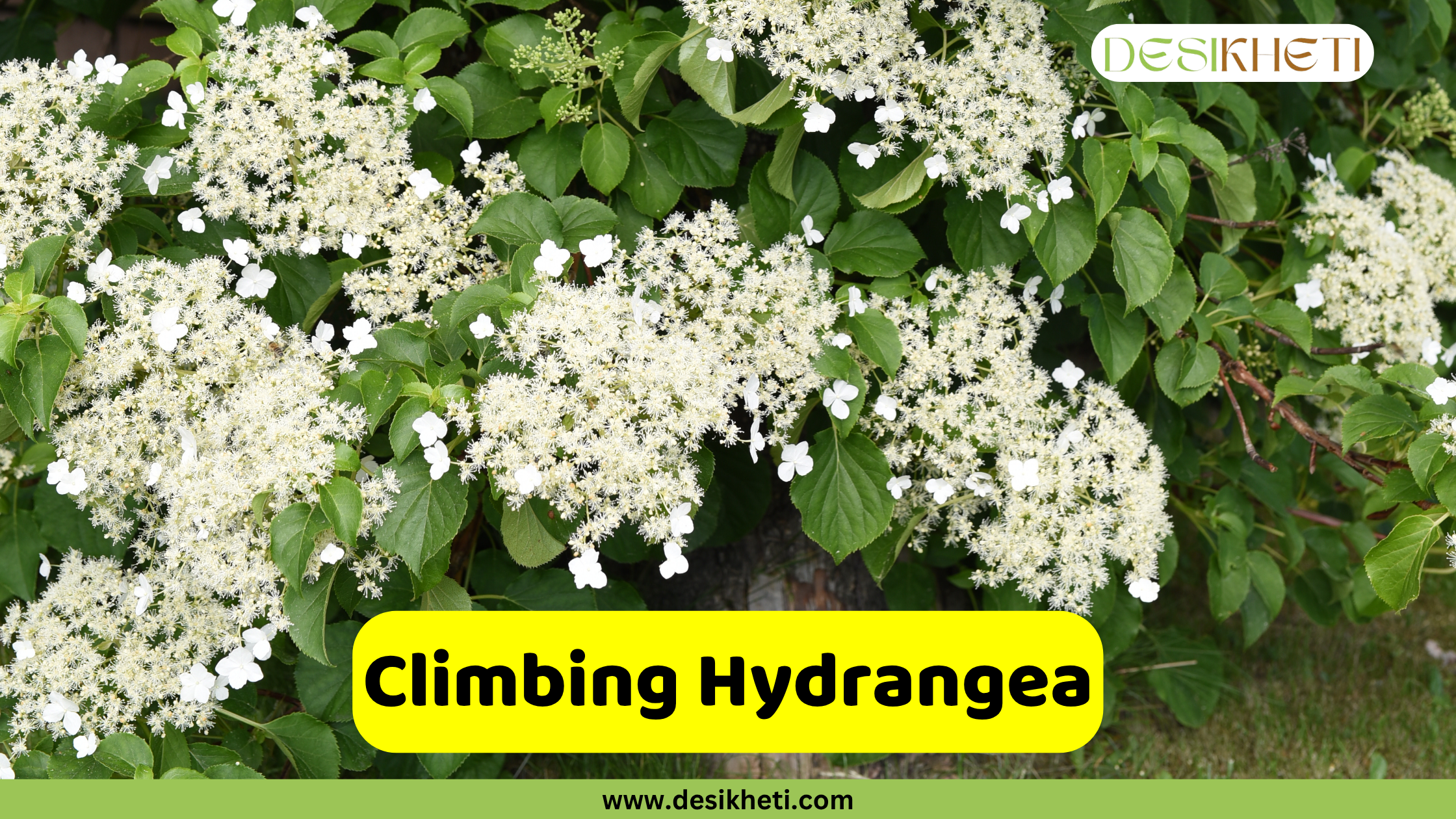
Botanical Name: Hydrangea anomala subsp. petiolaris
Native to the Himalayas and East Asia, this plant is a vigorous climber, reaching 30–50 feet. It produces white lacecap blooms in late spring, with heart-shaped leaves that add to its charm.
Uses & Benefits:
- Great for vertical gardens or old walls
- Fragrant and visually soft
Unique Feature: One of the few fragrant hydrangeas suitable for climbing walls.
Hydrangea Growing and Care Tips for Indian Gardens
- Climate Suitability in India: Hydrangeas are temperate-climate plants that prefer cool, humid environments. In India, they grow best in hilly regions such as Ooty, Kodaikanal, Darjeeling, Sikkim, Shimla, Mussoorie, and Munnar, where the climate closely resembles their natural habitat. Generally, it is advisable to grow hydrangeas in cooler areas with filtered sunlight and consistent moisture.
- Choose the Right Location: Select a spot with morning sun and afternoon shade, especially in hill stations. In warmer zones, hydrangeas should be grown in containers placed in dappled shade to protect them from the harsh midday heat.
- Soil Should Be Moist, Cool & Rich: Hydrangeas prefer well-drained, slightly acidic soil rich in organic matter. Keep the soil evenly moist, especially during hot spells and the flowering season. Avoid waterlogged conditions.
Prune Based on Variety:
- Bigleaf & Mountain Hydrangeas (macrophylla, serrata): Prune after blooming, as they flower on old wood.
- Smooth & Panicle Hydrangeas (arborescens, paniculata): Prune in late winter to early spring, since they bloom on new wood.
Control Flower Color with Soil pH:
- Acidic soil (pH < 6) → Blue flowers
- Alkaline soil (pH > 7) → Pink flowers
This mostly applies to macrophylla and serrata types. Use aluminum sulfate for blue flowers and garden lime for pink ones.
- Fertilize with Balance: Use a balanced fertilizer (e.g., 10-10-10) during spring and early summer. Avoid excess nitrogen, which promotes leaf growth over flowers.
- Mulch to Conserve Moisture: Apply organic mulch like compost, bark, or leaves around the base. It helps retain moisture, regulate soil temperature, and improve overall soil health.
- Shelter from Harsh Winds & Sun: Hydrangeas benefit from protection against dry winds and intense sunlight. In exposed areas, plant them near walls or hedges for shelter.
- Winter Protection in Frost-Prone Hills: In colder regions like Manali or Shimla, apply thick mulch and consider covering plants with fleece or jute during winter to protect dormant buds.
Other Hydrangea Varieties
- PeeGee Hydrangea
- Zinfin Doll Hydrangea
- Miss Saori Hydrangea
- Great Star Hydrangea
- Can Do!™ Hydrangea
- Blushing Bride Hydrangea
- Berry White Hydrangea
- Fire Light Tidbit Hydrangea
- Pistachio Hydrangea
- Grateful Red Hydrangea
- Cherry Explosion Hydrangea
- Blue Enchantress Hydrangea
Hydrangeas are more than just pretty flowers, they’re seasonal storytellers. They change color with soil chemistry, rebloom through the seasons, and add year-round texture and beauty to your garden.
For Indian gardeners in temperate regions, these hydrangea varieties offer a rewarding and visually stunning gardening experience. With proper care, partial shade, rich moist soil, and the right pruning methods these plants can thrive and bloom year after year.
FAQs on Hydrangea
1. How long do hydrangea flowers last?
A. Hydrangea blooms typically last 4 to 8 weeks on the plant, depending on the variety and climate.
2. What is the best Smooth Hydrangea?
A. ‘Annabelle’ is considered one of the best Smooth Hydrangeas for its large, round white blooms and adaptability.
3. Do hydrangeas make good cut flowers?
A. Yes, hydrangeas are excellent cut flowers, especially when harvested at maturity and placed in cool, clean water.
4. How long do Limelight Hydrangeas last?
A. Limelight Hydrangea blooms last from late summer through fall, about 6 to 8 weeks or more.
5. How big do Vanilla Strawberry Hydrangeas get?
A. Vanilla Strawberry Hydrangeas can grow 6 to 7 feet tall and 4 to 5 feet wide, depending on growing conditions.
6. What color are the flowers in Limelight Hydrangeas?
A. Limelight Hydrangea flowers start lime green, then mature to creamy white and pinkish-red.
7. How long do hydrangea flowers last in a vase?
A. Cut hydrangea flowers last about 5 to 10 days in a vase with proper care.
8. Does the Bobo Hydrangea change color?
A. No, Bobo Hydrangeas have white flowers that age to pink, but the color is not pH-dependent.
9. Should I deadhead Invincibelle Hydrangea?
A. Yes, deadheading can promote reblooming and improve the plant’s appearance.
10. What color are Little Lime Hydrangea flowers?
A. The flowers start lime green, then fade to creamy white and pinkish hues.
11. Do Limelight Hydrangeas lose their leaves?
A. Yes, Limelight Hydrangeas are deciduous and lose their leaves in autumn.
12. What type of Hydrangea is Twist and Shout?
A. Twist and Shout is a lacecap Hydrangea in the Endless Summer series.
13. What type of Hydrangea is Niko Blue?
A. Niko Blue is a Bigleaf Hydrangea (Hydrangea macrophylla) known for its deep blue blooms.
14. How do you care for a Bridal Bouquet Hydrangea?
A. Plant it in partial sun, keep the soil consistently moist, and prune lightly after blooming.
15. What is the largest Oakleaf Hydrangea?
A. Hydrangea quercifolia ‘Alice’ is one of the largest, growing 10 to 12 feet tall and wide.
16. How long can you keep Climbing Hydrangeas?
A. Climbing Hydrangeas are long-lived, often surviving 40 years or more with proper care.
17. What is the best Climbing Hydrangea?
A. Hydrangea anomala subsp. petiolaris is the most popular and hardy climbing variety.
